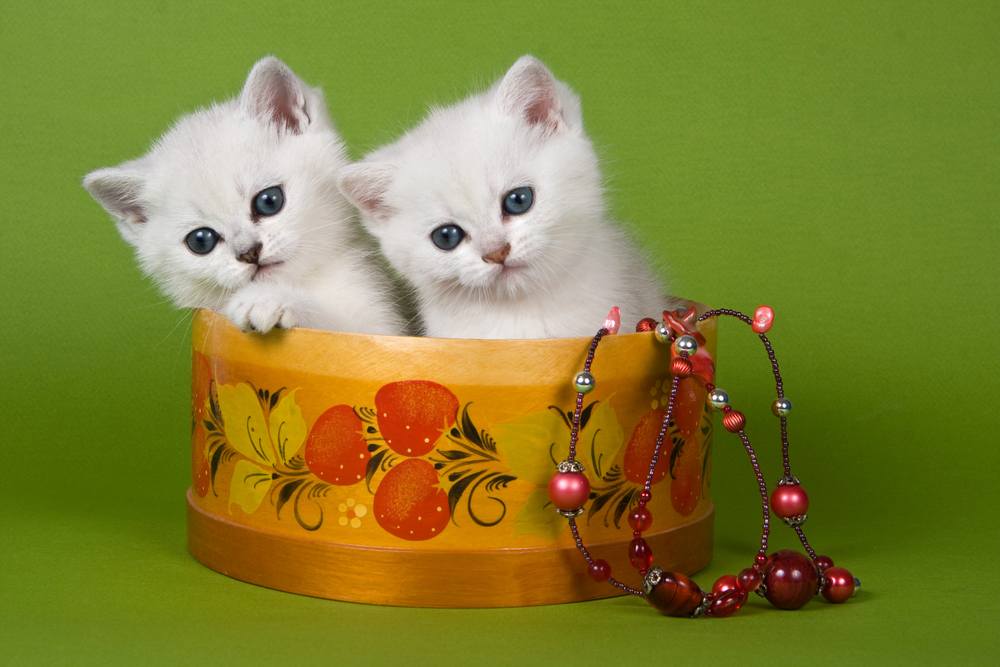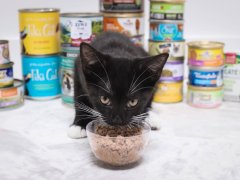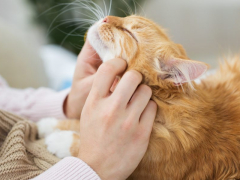
Are you wondering if your cat has had twin kittens? Do you have kittens from the same litter that look identical? Do you want to know if cats are able to have twins? If so, you’ve come to the right place. Read this vet-written guide to get the lowdown on cat twins.
Monozygotic, or identical twins, are rare in cats. Most kittens born as littermates are not identical, even if they look very similar, and kittens can be identical twins but be different colors and have different markings. The only way to know if two kittens are identical twins is witnessing them born in the same amniotic sac, or performing a genetic test on the kittens. Key Takeaways
Usual Litter Size for Cats
Cats are capable of carrying multiple kittens. Cats are induced ovulators. This means that the act of mating stimulates eggs to be released from their ovaries. Usually, female cats require two to four matings in the space of 24 hours to enable ovulation to occur. When fertilization occurs, each ovum implants onto the uterine wall.
Cats can become pregnant with kittens from more than one male. This might cause a very large litter. Kittens might be born looking very different from their litter mates if they have different fathers.
The optimum mating time for cats is spring or summer when the days are lighter for longer. Litters tend to be larger in the summer months, but cats can get pregnant at any time of the year.
Litters with single kittens or just two or three are more common in younger queens that haven’t been mated before. When a queen has had a litter she is more likely to go on to have higher numbers of kittens in subsequent litters. After the age of 6, litter sizes generally reduce again to three or fewer.
The size of a litter can vary greatly. Some cats only have one, others can have as many as 14. The average litter size is usually four kittens. Some pedigreed cat breeds such as Siamese, Burmese, and Orientals are known to have larger litters.
Larger Litters
The largest recorded litter of kittens was born in 1970, from a Burmese/Siamese mix cat named Tarawood Antigone who gave birth to 19 kittens. In the litter, 15 kittens survived—14 males and 1 female. In 1976, another cat named Clementine who was a domestic short-haired cat gave birth to 15 kittens and 11 survived. The same year, a Siamese cat called Tikatoo gave birth to 15 kittens, as well.
Problems with larger litters include the strain on the mother during pregnancy and birth, as well as the logistical issue of feeding them all if there are more kittens than lactating nipples. While very large litters are potentially dangerous for the mother, equally smaller litters can be too. This is because the kitten or kittens can grow to be extremely large in the womb and can present difficulties when being born due to their size.
Can Kittens Be Identical Twins?

Littermates that look exactly the same might or might not be identical twins.
Can kittens have identical twins? The short answer to this question is yes! Twins are defined as two babies that are born during the same pregnancy. This would indicate that if your cat gives birth to two kittens, then they are officially twin cats. In reality, it’s slightly more complicated than this. Animals often have multiple offspring in one litter, far more commonly than humans do. We don’t usually call certain numbers of kittens in litters twins, triplets, or quadruplets.
Identical twins, also called monozygotic twins, do occur with cats although it is extremely rare. Usually, kittens in a litter might appear very similar but they won’t possess exactly the same genes. Identical twins naturally occur when one fertilized egg splits itself in half when it is developing.
This means two embryos have exactly the same set of genes that develop into fetuses. Non-identical twins (also called fraternal twins or dizygotic twins) are kittens from the same litter, however, they have come from different sperms and eggs so they each have their own unique DNA and do not share exactly the same DNA with any of their siblings. Fraternal twins each have their own placenta, whereas identical twins share a placenta.
Kittens can share the womb together but actually have different fathers if the queen is mated twice by different male cats. This is called heteropaternal superfecundation. As mentioned, genuine identical twins, which occur when a fertilized egg splits into two embryos, are extremely rare but do happen occasionally.
If you have two kittens that appear to look exactly the same, they might not actually be identical twins. They might just look similar due to the fact they have the same father and mother. This means they have inherited similar genes as opposed to the egg splitting into two separate embryos.
How Can I Tell if My Kittens Are Identical Twins?
Identifying identical twin kittens can prove to be quite tricky! Even if two kittens share the same genes because they have come from the same egg, the kittens might not actually look the same. This is due to the fact that the genes that dictate what color the kittens will be and which markings they have on their coats are expressed in different ways.
The expression of the genes depends on many factors. So they can technically have the same genes but different coats. Female cats have two copies of the X chromosome, males have an X and a Y. Because females have two copies of the X chromosome, one of them is inactivated so that both X chromosomes aren’t expressed at once.
This is done at random, so two identical female kittens might have different X chromosomes inactivated, meaning one displays characteristics from the mother and one from the father. This is very common in calico and tortoiseshell cats. They carry one copy of the orange color and one of the brown or black color genes in their cells.
This means that kittens can be identical twins but they could be completely different colors. Confusing, huh? Identical twins do always have to be the same sex; it is impossible to have identical twins of the opposite sex.
The only ways to truly know if your kittens are identical twins is if you witnessed them being born and saw them sharing the same placenta and amniotic sac, or to carry out a DNA test. This is done by taking a sample of hair or blood or a mouth swab.
Appearance of Littermates

Kittens might look identical even if they aren’t, so looks alone aren’t enough to determine identical twins.
It can be very difficult to tell a litter of kittens apart when they are young. Even if they are not identical twin cats, it is likely that they will share a large proportion of their DNA and therefore look alike. Breeders often give each kitten in a litter a different color collar or paint one of their nails a certain color to be able to differentiate them.
Identical Twin Kittens: Final Thoughts
Twin kittens do occur, although it’s rare for cats to give birth to genetically identical twins. If two cats look identical but they came from separate amniotic sacs with separate placentas, it’s likely they just look similar because they share a lot of the same genes.
Some kittens from the same litter are actually half-siblings as it is possible for a cat to be mated by two different tom cats. Whether your kittens are identical twins or just litter mates with a similar gene pool, you can guarantee as they grow up they will develop their own unique adorable personalities.
Also Read: Cat Giving Birth: What You Need To Know?
Frequently Asked Questions
What makes a kitten a twin?
Twins are technically babies born from the same pregnancy at the same birth. Identical cat twins are kittens that started as one egg, fertilized by one sperm, which then splits early on in the development and continues as two separate embryos both carrying identical copies of genes.
Can two kittens be born at the same time?
As a species, cats very commonly have litters with multiple babies. The average number in a litter is four, however, some cats have been reported to have up to 19! Female cats are able to be impregnated by more than one male if they are mated close together. This can result in many kittens being carried during the pregnancy.
Can a litter of kittens be considered twins?
Cat breeders do not usually refer to multiples in litters by the correct name corresponding to the number in the litter, for example, twins, triplets, quintuplets, septuplets, etc. Not all littermates are twins, however, identical twins can be present in a litter.
Do twin kittens share a placenta?
This depends on what type of twin we are dealing with. With true identical, monozygotic twins that have developed from the same egg, the two kittens will share a placenta and amniotic sac. With fraternal or dizygotic twins, each kitten will be contained within their own membranes and they will each have their own placenta and amniotic sac.







